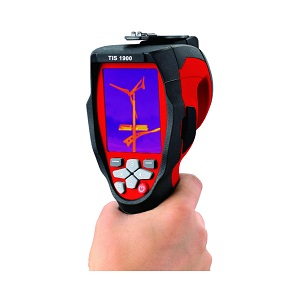EVSE stands for electric vehicle supply equipment and effectively relates to the charging station which delivers an electrical charge to the battery of the electric vehicle (EV). EVSE communicates with the EV to determine the EV battery’s state of charge and the amount of power that is required. The EV’s on board charger converts AC current from the EVSE into DC current that can be stored in the battery. However, over time, problems with the electrical components of the EVSE can occur.
Common problems with EVSE include connections becoming loose or corroded, which can lead to increased resistance, fuses that are at or near capacity can overheat, while you can also experience a breakdown in the insulation resistance, overloads and phase imbalances. If anything is incorrectly installed in the EVSE, this can lead to damaged outputs and therefore excessive heat created.
Using a thermal imaging camera to detect electrical problems
The deterioration in EVSE outlined above is not always visibly apparent and can’t always be detected by conventional safety checks or electrical tests. However, where an electrical problem creates hotspots, these will be visible through a thermal imaging camera.
Thermal imaging cameras use infrared technology to detect thermal energy in specific locations. They can identify and measure the intensity of radiation in the infrared part of the electromagnetic spectrum and convert it into a visible image. Infrared light is not visible to the human eye, but the thermal imaging camera is able to detect this light and use it to display an image.
So to detect overheating issues in electrical components of EVSE we should:
- Point the thermal imaging camera at different areas of the EVSE installation, including the body of the installation and all associated connections and cabling.
- View the screen on the camera to detect where overheating is occurring. The screen displays a live image which shows the area as different colours. White areas are the hottest areas of excessive heat, followed by yellow, orange and red areas of excessive heat in descending order, green areas of normal heat at roughly room temperature and then areas of blue and purple are cooler temperatures.
- You can record a sequence of thermal imaging monitoring or take snapshots of specific locations. All this footage can then be viewed later or downloaded and shared.
- The screen on the camera is also giving you real-time readings of the temperatures as you move the camera around the location, usually in a range of – 20°C to 350°C, as with the TIS 1900 thermal imaging camera, one of a range of thermal imaging cameras supplied by Test Instrument Solutions.
With a thermal imaging camera you are able to detect problems with EVSE in seconds in a safe and non-invasive way. You can test and monitor equipment during operation, meaning there is no disruption to normal working procedures. This is a great way to troubleshoot problems and carry out routine inspection and maintenance, because it can identify issues quickly that could cause much bigger problems and would otherwise not be visible, and would only be detected through stopping the equipment, taking it apart and carrying out more direct and labour-intensive testing methods. So using a thermal imaging camera for EVSE inspection and maintenance will save you time and provide accurate and reliable information.
Test Instrument Solutions offer a diverse range of evse testing equipment to help you with your evse testing needs.
Please note that this section is for information purposes only. Anyone using equipment referred to in this section must be suitably qualified and/or experienced within the respective field. If in doubt before use, please consult a qualified electrician or engineer & thoroughly read all instruction booklets.